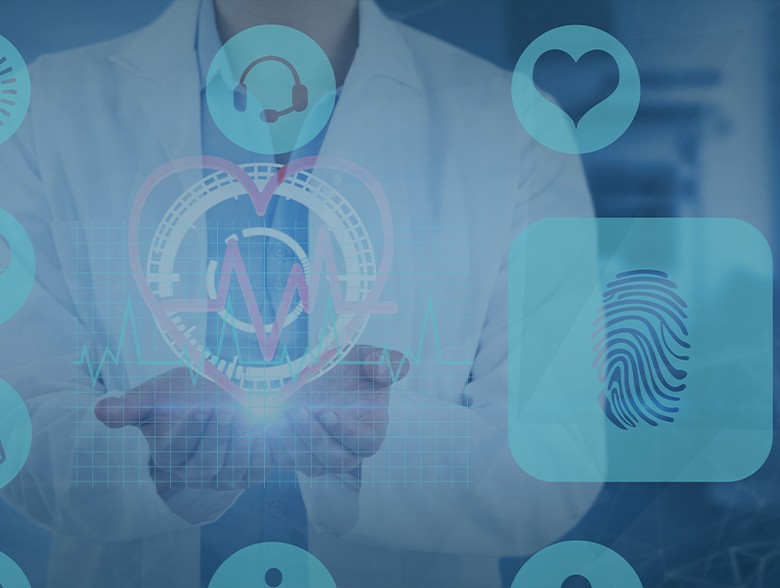Reduce Healthcare Insider Threats with Identity and Access Management

By Zac Amos, Features Editor of ReHack
Identity and access management (IAM) refers to the policies, procedures and technologies used to manage and control access to digital resources and systems. IAM plays a crucial role in cybersecurity, particularly in mitigating insider threats. Insider threats occur when employees, contractors or third-party vendors with authorized access to sensitive systems and data intentionally or unintentionally misuse their privileges, resulting in security breaches, data loss or theft.
Health care organizations are particularly vulnerable to insider threats due to the sensitive nature of the data they handle, including medical records, personal information and financial data. Learn how to protect such critical information with identity and access management.
Understanding Identity and Access Management
IAM is a comprehensive framework that ensures users and entities can access the resources they need to perform their jobs effectively while preventing unauthorized access. It involves managing the digital identities of individuals and entities who need to access resources, ensuring they have the appropriate level of access based on their roles and responsibilities.
IAM also involves authentication and authorization mechanisms, which verify user identities and control their access to resources. Its solutions typically involve the following components:
- Identity Governance and Administration (IGA): IGA involves managing the life cycle of digital identities, ensuring user identities are accurate, up-to-date and aligned with organizational policies and procedures.
- Authentication: Authentication mechanisms verify the identity of users before they can access resources. Common authentication mechanisms include passwords, biometrics, smart cards and tokens.
- Authorization: This controls user access to resources based on their roles and responsibilities. Authorization mechanisms include role-based access control (RBAC), attribute-based access control and mandatory access control.
- Single Sign-On (SSO): SSO enables users to access multiple resources using a single set of credentials, streamlining the authentication process, and reducing the risk of password fatigue and unauthorized access.
- Identity and Access Analytics: This provides insights into user behavior, enabling organizations to identify anomalies, suspicious activity and potential security threats.
How IAM Can Help Protect Against Insider Threats in Health Care
By implementing a robust IAM framework, healthcare organizations can offer training to reduce the 25.9% turnover rate, control who has access to what resources, and monitor and manage access in real-time, reducing the risk of insider threats. Here are some specific ways in which IAM can help protect against insider threats in health care.
- Access Control
Health care organizations can manage access in real-time and regulate who has access to what resources, thanks to IAM. They can also lower the risk of data breaches and theft by adopting access controls to ensure only authorized individuals can access critical data and systems. For instance, health care organizations can use RBAC to assign access permissions based on predetermined roles, verifying users can only access the resources they need to perform their jobs.
- Identity Governance and Administration
By implementing IGA, organizations can make sure only authorized personnel can access sensitive data and systems. For example, health care organizations can use IGA to manage user accounts and permissions, ensuring profiles are only created for authorized personnel.
- Multi-Factor Authentication (MFA)
MFA requires users to provide two or more forms of authentication before they can access resources, such as a password and a biometric scan. This can significantly reduce the risk of unauthorized access, as attackers must compromise multiple factors to gain access. For example, health care organizations can use MFA to ensure only authorized personnel can access sensitive data and systems, reducing the risk of data breaches or theft.
- Privileged Access Management
Privileged access management (PAM) is the process of managing and restricting access to accounts with elevated admission to sensitive data and systems, such as administrator accounts. PAM can help health care organizations verify only authorized staff use privileged accounts and are routinely reviewed and watched for unusual activities. Health care companies can also use it to limit access to sensitive information and systems to those employees who need it to perform their jobs.
- Continuous Monitoring and Analytics
IAM solutions can enable health care organizations to monitor user activity continuously and manage access permissions in real-time. This can help organizations detect and respond to insider threats quickly. For example, health care organizations can use analytics to monitor user behavior and identify anomalies, such as accessing data outside their regular working hours or attempting to access resources they are not authorized to others.
Eliminate Insider Threats in Health Care
Identity and access management solutions can effectively mitigate these threats by controlling access to data and systems, managing identities and monitoring user activity in real-time. By implementing a comprehensive IAM framework, health care organizations can significantly reduce the risk of insider threats and safeguard sensitive patient data and systems.
About the Author
Zac Amos is the Features Editor at ReHack, where he covers cybersecurity and the tech industry. For more of his content, follow him on Twitter or LinkedIn.

